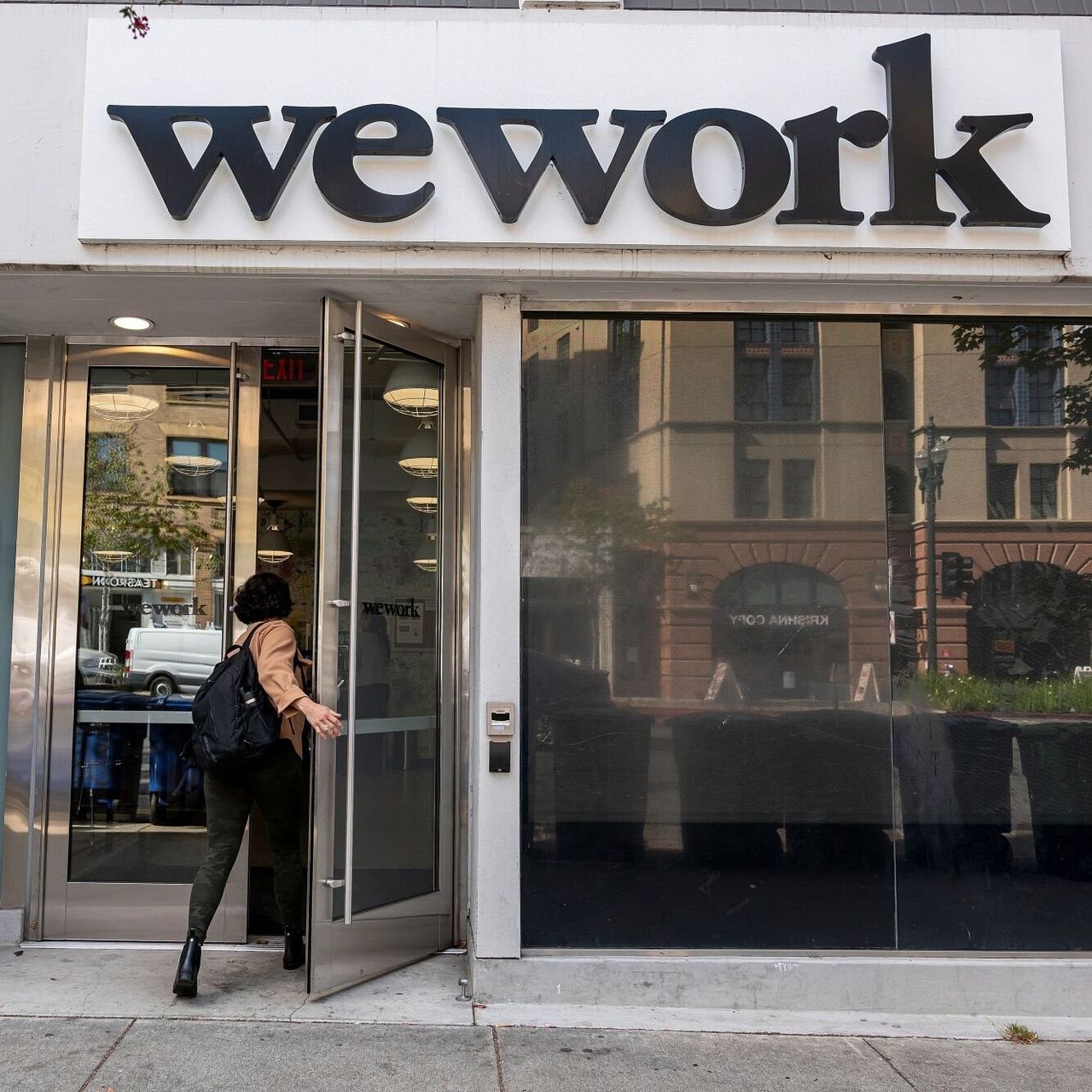
Companies weighed down with too much debt may be able to avoid bankruptcy in 2024, thanks to an easing in monetary policy the Federal Reserve is expected to unroll in coming months.
Companies in the U.S. borrowed some $1.7 trillion after the Fed cut interest rates to near zero in 2020. But after rates rose quickly in 2022 and continued rising in 2023, several large companies weren’t able to borrow more and ran out of cash, forcing many of them to file for bankruptcy, including home-goods retailer Bed Bath & Beyond and co-working space provider WeWork.
Even though highly-indebted companies have billions more in debt coming due in 2024, they may be able to avoid filing for bankruptcy. Markets now expect the Fed will cut rates in the new year, spurring companies to refinance their old debts and sidestep a long-awaited financial reckoning with the pandemic-era debt spree.
“We’re seeing borrowing costs for companies come down before the Fed has even officially decided to reduce and cut rates,” said Sina Toussi, chief investment officer at Two Seas Capital, which invests in financially troubled companies. “The catalysts for more bankruptcies [in 2024] are just not there.”
Since Fed Chair Jerome Powell said in mid-December that high interest rates could cause unnecessary harm to the economy, some investors on Wall Street have priced in three rate cuts for 2024. Those expectations have already made it easier for companies to borrow. In the debt markets, the average cost for a highly indebted company to borrow has dropped, falling to the cost of a U.S. Treasury bond plus 3.4%, the lowest premium to borrow since early 2022, according to Fed data.
The yield on an average junk-rated bond has also fallen, from a high of 9.5% on Oct. 20 to 7.4% as of Dec. 26, according to the Fed.
With debt getting cheaper, Moody’s Investors Service forecasts more U.S. companies will be able to borrow and pay bills on time in 2024 than in 2023. The ratings agency estimates 3.8% of highly indebted companies will default on a 12-month rolling ratio as of the end of 2024, compared with 4.6% today.
“The very recent data is optimistic,” said Christina Padgett, head of leveraged finance research at Moody’s. “It may not pan out, but what we’re looking at now is pretty positive for borrowers.”
Not all companies will find it easy to refinance debt even if the Fed starts cutting rates.
Companies with low credit scores are already expected to pay up to refinance, according to research from BNP Paribas. It estimates risky corporate borrowers with ‘CCC’ scores would likely pay 4.9 percentage points more interest to refinance their debts, which could be prohibitively expensive.
That relatively higher cost of borrowing will likely persist even if the Fed cuts rates, BNP said.
“The Fed’s stance has significantly reduced any refinancing risk for many high-yield companies, but they have not been able to do it for companies at the low end of the credit spectrum,” said Viktor Hjort, global head of credit strategy at BNP.
Some technology and venture capital-backed companies will continue to face financial challenges in 2024, according to Torsten Slok, chief economist at Apollo Global Management.
“That’s where the bubble is,” Slok said. “That’s where you should expect to see the correction as we go into 2024 with the cost of capital still staying elevated.”
Funds offering private loans, credit and other types of debt could bail out some of these companies. Private credit has ballooned from about $280 billion of assets under management in 2007 to $1.5 trillion in 2022, according to data from PitchBook. Private-equity firms like KKR, Apollo and Blackstone have channeled an increasing share of their assets into these markets.
Companies also raised billions of dollars in new financing outside of traditional debt and private credit markets over the past two years. Many of these companies took advantage of weak loan contracts put in place during a surge in corporate lending after the 2008 financial crisis.
These fundraising tactics, known as liability management exercises, allow companies to raise new debt by moving assets away from existing lenders, weakening their ability to recover funds if a borrower needs to restructure.
Plastics and latex-binder maker Trinseo, Apollo-backed photo-book retailer Shutterfly and stretchy-fabric maker Lycra have raised billions of dollars in new debt through liability management exercises this year.
“Most large private credit funds have very large pockets of capital that actively market themselves as being a counterparty to liability management deals, and that trend isn’t going away,” said Ryan Preston Dahl, co-chair of the business restructuring practice at law firm Ropes & Gray.
While there has been an uptick in corporate bankruptcies, the flip side is the Fed’s plans to cool the economy through monetary policy appear to be working.
Corporate debt as a percentage of yearly economic activity in the U.S. fell from about 55% in July 2020 to around 50% as of July 2023, as some companies were shut out of capital markets and couldn’t borrow more while the economy kept on growing.
However, if corporate America is able to go on another borrowing spree, economists warn it runs the risk of keeping more unproductive firms alive, ultimately resulting in a lower growth rate for the economy.
“Many companies with basically no revenue or profit are still in business because they have been able to borrow high levels of debt,” Slok said. “Depending on how the Fed tweaks its monetary policy next year, we may see the corporate debt bubble reinflate again and create a lot more problems for the Fed in the long run.”


